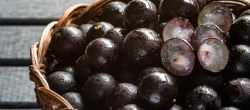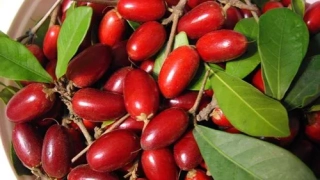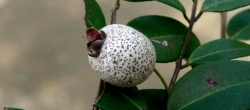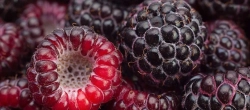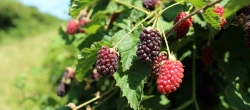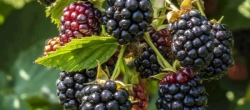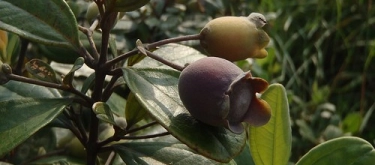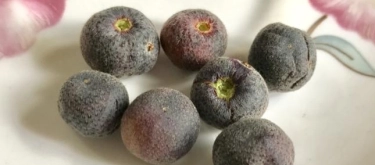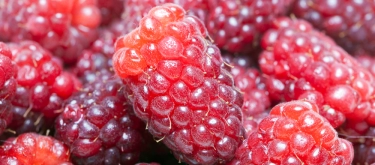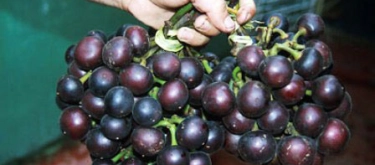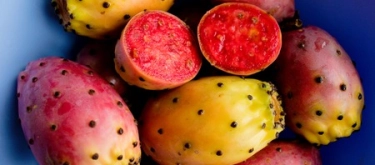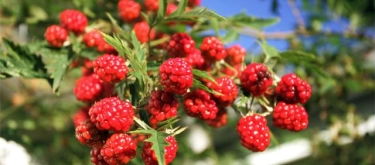Bacaba Berry: Taste Profile, Aroma, Benefits and Health Risks
Bacaba berry (Oenocarpus bacaba) is a small, dark purple fruit native to the Amazon rainforest and other tropical regions of South America. Closely related to açaí, bacaba is prized for its creamy, nutritious pulp and is a traditional ingredient in Amazonian beverages and dishes. The berry is gaining popularity outside Brazil for its unique flavor profile and rich antioxidant content.
Bacaba berry is naturally gluten-free, low in allergens, and suitable for vegetarian and vegan diets. The fruit is generally safe, but individuals with sensitivities to palm fruits should try bacaba with caution. Bacaba pulp and juice may cause mild digestive discomfort if consumed in large amounts due to their fiber and fat content.
What does Bacaba Berry taste like?
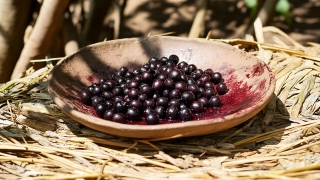
Complete Sensory Description
Bacaba berry offers a mild, creamy, and slightly earthy flavor with subtle notes of almond and cocoa.
The initial taste is gentle, with a mellow sweetness and a delicate, nutty undertone. The texture of the pulp is smooth and creamy, similar to açaí but less fibrous, and can sometimes feel slightly oily due to the berry's natural fats. As you enjoy bacaba, a faint earthiness develops, followed by a clean, slightly floral aftertaste. Bacaba’s deep purple pulp gives a visual impression of richness, but its flavor is surprisingly subtle and easy to enjoy.
In-depth Flavor Analysis
The mild flavor of bacaba is primarily due to its balanced combination of natural fats, simple sugars, and low acidity. The creamy texture comes from high levels of healthy unsaturated fats, including oleic acid. Polyphenols and anthocyanins give the berry its deep purple color and add a gentle bitterness and floral aroma. Compared to açaí, bacaba is less tart, with more pronounced nutty and earthy notes and almost no astringency.
Culinary Uses and Forms of Consumption
Bacaba juice (wine):
The most traditional use is as “vinho de bacaba,” a thick, creamy beverage made by soaking, mashing, and straining the ripe berries. The resulting juice is often enjoyed chilled and sweetened, either alone or mixed with tapioca, cassava flour, or other local ingredients. Bacaba juice is a staple in Amazonian households and is sometimes served with a touch of sugar or honey.
Fresh bacaba pulp:
The pulp can be eaten fresh, either scooped directly from the berry or blended with other fruits. It is commonly added to smoothie bowls, breakfast porridges, and fruit salads, where its creamy texture adds body and mild flavor.
Culinary blends and desserts:
Bacaba pairs well with bananas, coconut, nuts, and mild sweeteners. It is sometimes used in ice creams, mousses, and plant-based desserts for its color and texture rather than for a strong flavor contribution.
Not recommended:
Bacaba is not usually cooked, as heating can destroy its delicate nutrients and alter its subtle flavor. The berry contains a large seed, which is not edible.
Selection, Preparation, and Storage
Selection:
Choose bacaba berries that are plump, deep purple, and free of mold or wrinkling. Fresh berries should be slightly soft to the touch and have a glossy skin.
Preparation:
Rinse the berries thoroughly, then soak them in warm water to soften the pulp. Mash and strain to separate the pulp from the seed. The pulp can be consumed directly or used to prepare juice, smoothies, or desserts.
Storage:
Fresh bacaba berries should be eaten within a few days or refrigerated to extend shelf life. The prepared juice or pulp can be kept refrigerated for up to 2–3 days. Bacaba pulp can also be frozen for use in drinks and desserts.
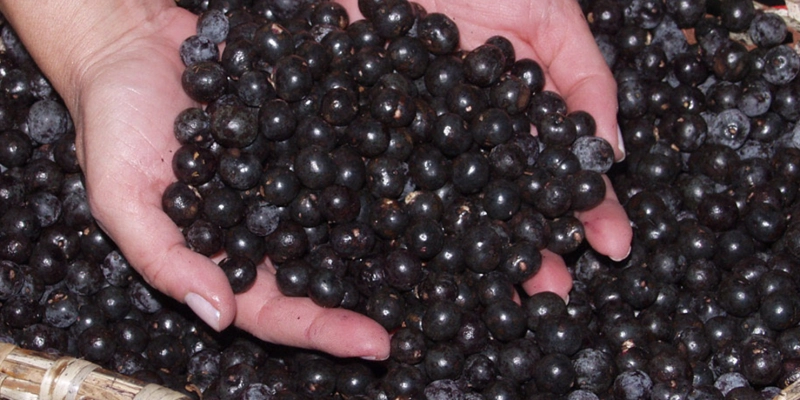
Nutritional Insights
Bacaba is rich in unsaturated fats (especially oleic acid), fiber, and antioxidants such as anthocyanins and polyphenols. The berry provides vitamin E, vitamin C, and a range of minerals, including potassium and calcium.
Potential benefits:
-
Supports cardiovascular health due to its healthy fats
-
Antioxidant compounds may help protect against cellular damage
-
Promotes digestive health thanks to fiber content
-
Provides quick energy and satiety from natural sugars and fats
Historical and Cultural Significance
Bacaba has been consumed by indigenous peoples of the Amazon for centuries, valued as both a food and a source of energy during long journeys or hard labor. “Vinho de bacaba” is traditionally prepared and shared at community gatherings, festivals, and family meals. The palm that produces bacaba berries is also culturally important for its wood, leaves, and role in local ecosystems.
Interesting and Curious Facts
-
Bacaba is sometimes called “Amazon olive” due to its high oil content and creamy texture.
-
Unlike açaí, bacaba is almost never eaten as a frozen sorbet but is more commonly used in thick drinks and porridges.
-
The palm trees that bear bacaba are crucial for rainforest ecology, providing food and shelter for wildlife.
-
Bacaba juice has a naturally purplish hue and leaves a subtle, nutty aftertaste on the palate.
-
A common misconception: despite its color, bacaba’s flavor is not as intense or tart as açaí.
Harm and Dietary Considerations
Bacaba is safe for most people when eaten in food amounts. Rarely, mild digestive discomfort may occur if large quantities are consumed due to its fiber and fat content. The berry is not recommended for people with palm fruit allergies. The large seed is not edible and should always be discarded.
Religious Dietary Considerations
Bacaba is plant-based and acceptable in vegetarian, vegan, Halal, Kosher, Hindu, and Buddhist diets.
Final Thoughts & Sensory Journey
Bacaba berry delights with a creamy, nutty taste and mild sweetness—its subtle flavor and lush purple color make it a true Amazonian treasure for both traditional and modern kitchens.
Resources
-
Davidson, A. (2014). The Oxford Companion to Food. Oxford University Press. ISBN 978-0199677337
-
McGee, H. (2004). On Food and Cooking: The Science and Lore of the Kitchen. Scribner. ISBN 978-0684800011
-
Journal of Food Composition and Analysis, 2010, “Nutritional Composition and Antioxidant Activity of Bacaba (Oenocarpus bacaba Mart.)”
-
International Journal of Food Science, 2019, “Bioactive Compounds in Bacaba Berry and Their Health Implications”
